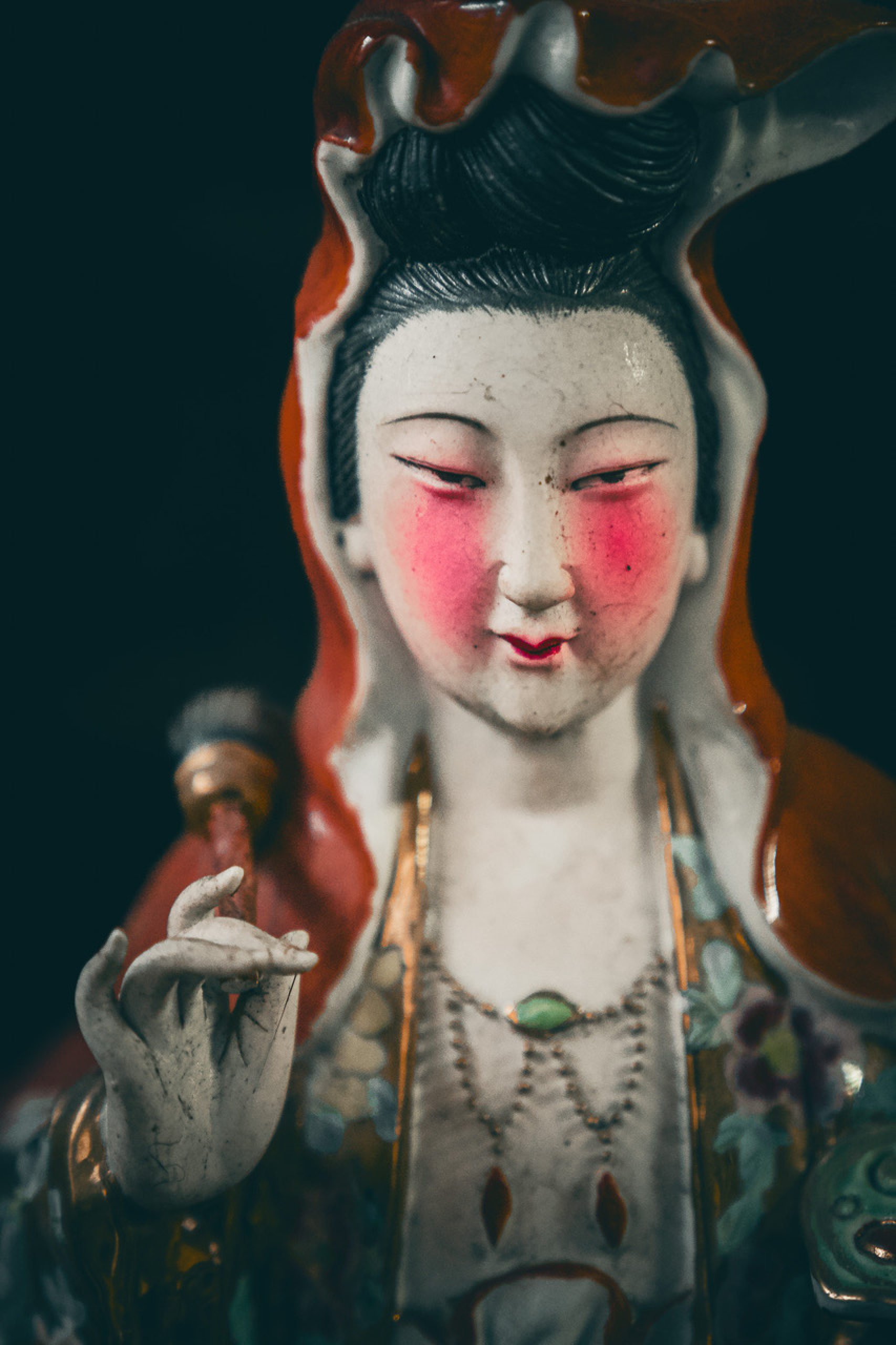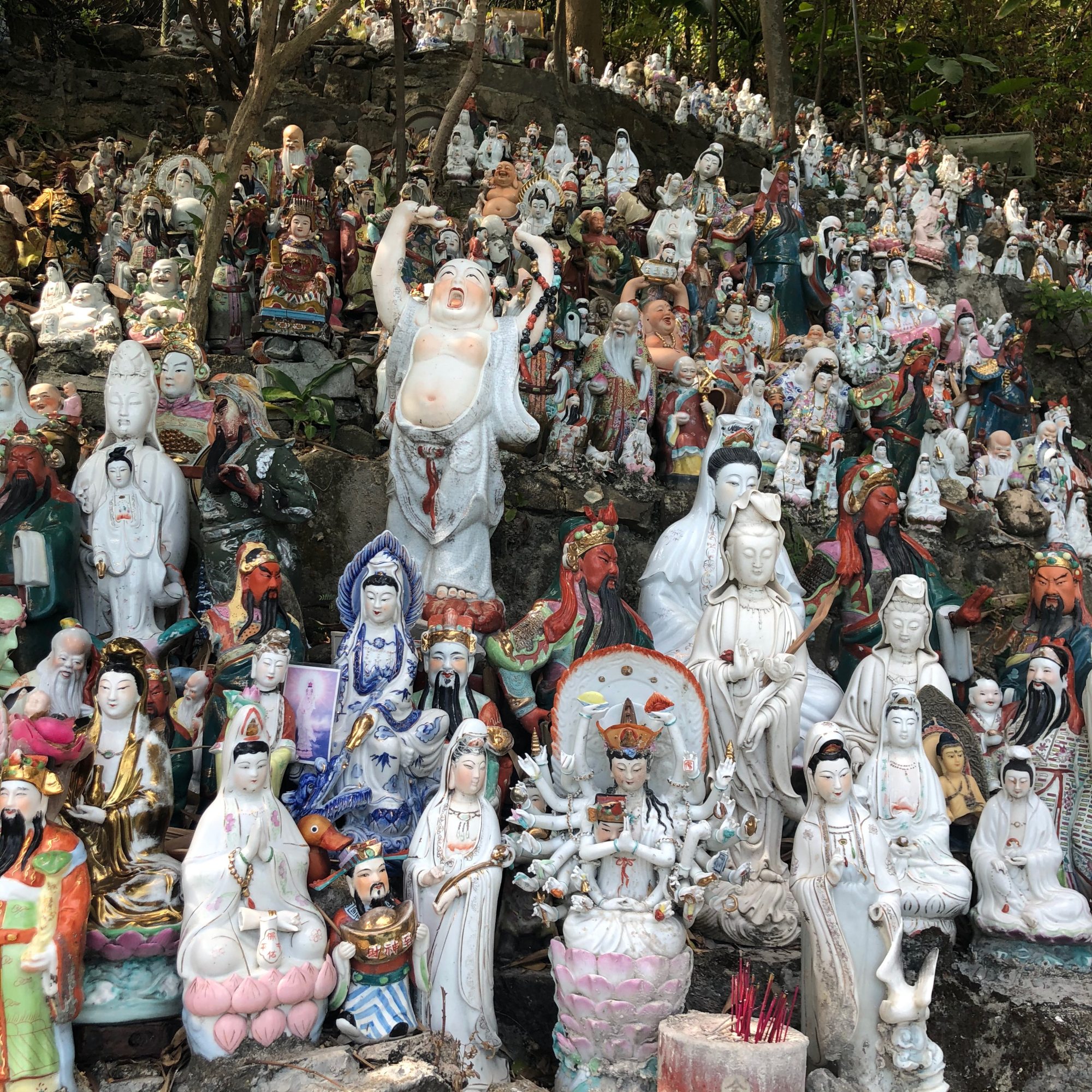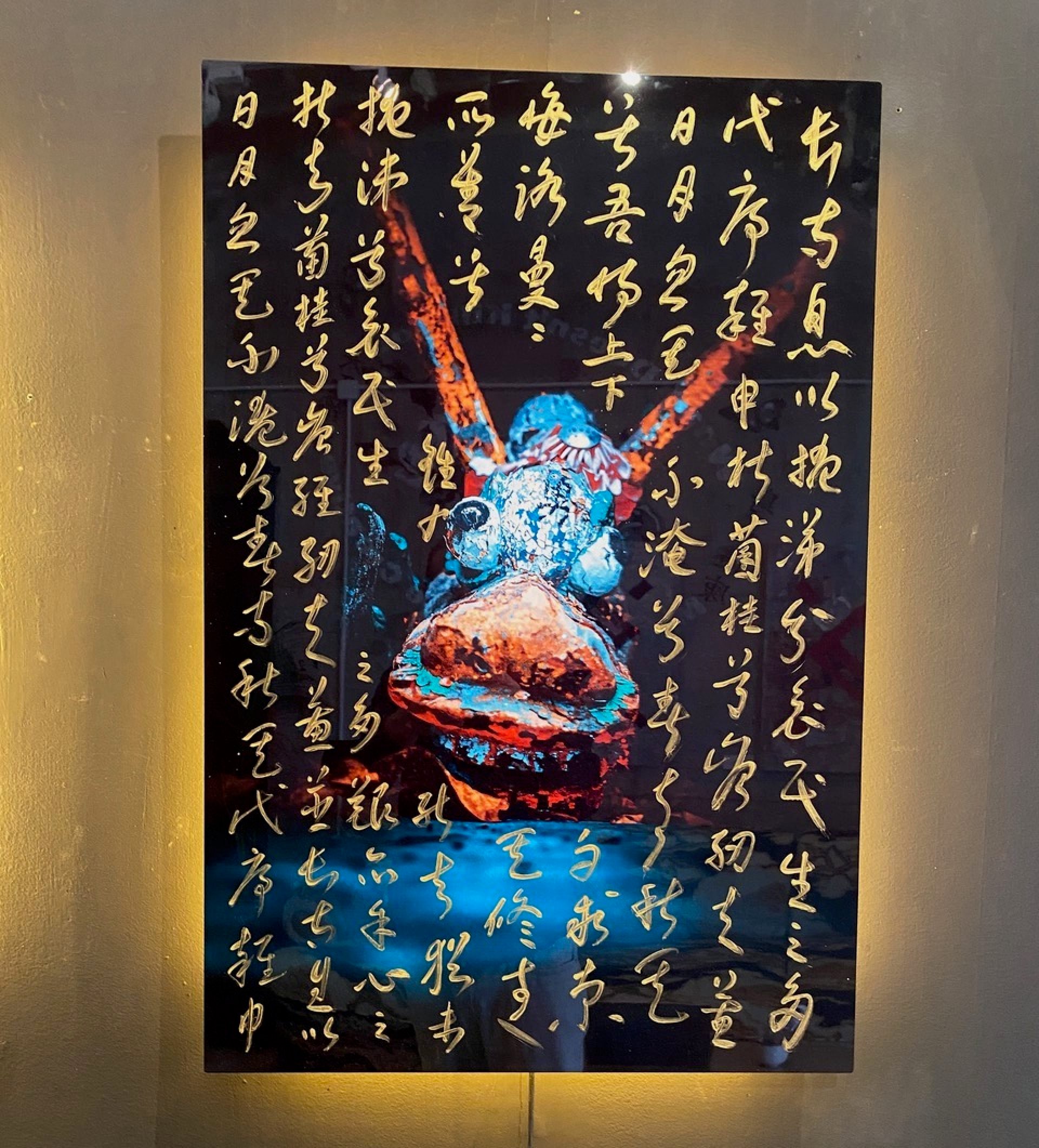
Abandoned statues of deities and demons seen in Hong Kong photo exhibition that reveals the magic of these effigies found across the city
- Dickie Fowler, aka Dickie Suzuki, travelled to temples and makeshift shrines all over Hong Kong to snap the statues
- An exhibition at the HKCACC Gallery shows more than 35 of his photos, some of which he has given additional spins besides his distinctive saturated colouring
Hidden away at the base of Waterfall Bay Park, in Pok Fu Lam on Hong Kong Island’s western shore, is a spectacle that can be described as, quite literally, otherworldly.
There, thousands of colourful statues of deities, abandoned by their owners, take their place on a rocky hill scattered with leaves and branches, culminating in a makeshift display that has been dubbed “a sky full of gods and Buddhas” by locals.
The effigies in this shrine of sorts are among those featured in a new exhibition by photographer Dickie Fowler – known by his artist name Dickie Suzuki, after his Japanese wife – who is showing more than 35 portraits of deities in “The Art of Celestials”.
On view until February 25 at the HKCACC Gallery in Po Hing Fong, Sheung Wan, the exhibition is a result of Fowler’s desire to discover and showcase little-known or abandoned pockets of Hong Kong.

The British photographer, who has lived in Hong Kong since 1989, is a video producer by trade, having produced and directed a number of cooking shows, action-adventure shows and commercial videos over the years.
When work dried up during the coronavirus pandemic, he began using his camera gear to take stills instead.
“I was satiating my wanderlust by travelling to all the places in Hong Kong that I hadn’t been,” he says. “I hadn’t realised what I’d missed until I started looking deliberately.”


Above all, the photographer was looking to capture images that offered a sense of ambiguity. “I’m looking for images that you can’t really place in a time frame,” he says.
That led him to temples and makeshift shrines all over Hong Kong, where he discovered hundreds of deities and demons that all had colourful backstories.
Among the places he visited were a sky full of gods and Buddhas, the Hong Kong Dragon Garden, in Tsing Lung Tau in the southwest New Territories, and the Fuk Tak Temple, in Shau Kei Wan at the eastern end of Hong Kong Island.

“I realised that a lot of people just don’t understand what’s going on inside the temples,” he says. “They go once as a tourist, but then they don’t revisit these places.
“They don’t realise how many magical stories that are contained within, and the absolute beauty of these effigies, which have decades, if not centuries, of patina. All that wear and tear really adds to their lustre, in my opinion.”
Among the effigies on display in “The Art of Celestials” are those of Guan Yu (god of war), Choy San (god of wealth) and Tin Hau (goddess of the sea).

The figurine of Sai Wong Mo (also known as the Queen Mother of the West) was found at a roadside shrine where someone had splashed the abandoned statues with red paint and cemented them in place – traditionally, it is considered bad luck to throw away religious figurines, which is why they are often abandoned on street corners in Hong Kong.
“When you’re looking at a portrait like this, I can imagine them as a living entity,” says Fowler. “Your brain starts going into the backstory of what kind of people they would be. If he’s a benevolent demon, you can imagine him being a lot of fun.”
Indeed, demons such as Qianliyan, the green-skinned one with extraordinary vision from the novel Journey to the West, as well as his younger brother Shunfeng’er, who has exceptional hearing, are also depicted in the exhibition.

Having died in a fierce battle the siblings became vengeful spirits, but they began using their abilities for good after the sea goddess Mazu intervened.
Meanwhile, Guānyīn shows the goddess of mercy (also known in Cantonese as Kwun Yum) against a graffiti-adorned backdrop, which was added in post-production. By juxtaposing the deities with modern backgrounds, Fowler hoped to reinterpret the portraits in a contemporary context, he says.


“I just wanted to bring them into the modern world somehow,” he says. “Obviously a picture needs to be visually arresting on the first glance, but I want people to then go, ‘Hang on a minute. What’s going on?’”
Other images offer a sense of humour – a photograph of two half-undressed monks enjoying each other’s company is simply titled Joy.
“It’s a bit homoerotic,” Fowler says with a laugh. “I’m not going to say anything more about that, I’ll just let people make their own minds up.”

“The Art of Celestials”, HKCACC Gallery, 68 Po Hing Fong, Sheung Wan, until February 25; dickiesuzuki.com.

